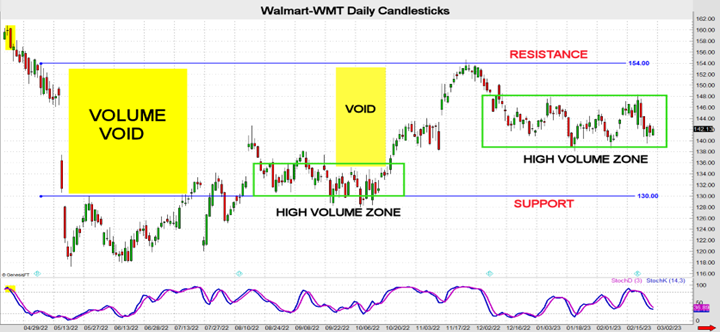Fundamental Shift and Volume Voids
Recently there was a fundamental shift in markets. For a couple of years positive economic news was bearish for both stocks and bonds. Weak data was bullish for those sectors because it might make the Fed more likely to lower interest rates. Recently the Fed shifted from focusing on inflation to paying more attention to employment data. This is a fundamental shift from price pressures to job reports.
Volume and volatility jump when traders shift focus from interest rates to the strength in the job market. These are the mandates for the central bank. Employment data will likely drive prices in the months ahead. This change leads to large swings in prices that leave gaps or low-volume pockets the wake.
Vertical vs. Horizontal Phases
As an analyst and educator, I try to keep it simple by classifying market movements into two phases: vertical and horizontal. The vertical phase may be described as a breakout, imbalance, trend, run, rally, dive or dip. The vertical phase is either bullish or bearish. During the horizontal stage a market is consolidating, congesting, balancing, coiling, resting or developing value over time. This is the balance phase. Rest phases follow run phases, which lead to rest phases and the cycle repeats.
Leaving Low-Volume Zones Behind
When markets break out of consolidation phases they often do so quickly with above average volume and ranges. Run phases can be violent as the market moves from balance to imbalance. During such runs markets move with time; they do not stop to rest or develop value. While doing so low-volume zones or pockets are often left in the wake.
Filling Volume Voids
Low-volume zones typically have both a trend higher and lower with candlesticks that have long bodies and very little overlap in price. The initial rally and decline define the barriers (support and resistance areas) that will contain most of the volume in the future. The Walmart daily chart below illustrates this common pattern. A trend lower accelerated in May, and the trend higher started in October and finished in late November. The volume voids that were left behind eventually became high-volume zones. I think of this pattern as a puzzle with pieces missing. A new trend may not commence unless the missing piece (volume) accumulates in the open area or volume void.

Apply Neutral Strategies
Once this pattern is recognized, neutral strategies should be applied. A mean reversion strategy works well in this environment. Simply wait until the market tests the support area and either buy the underlying, buy calls or sell puts depending on implied volatility. Or sell the underlying, purchase puts or write calls when the resistance area is tested. This pattern is ideal for neutral option strategies. An aggressive approach would be to go short a straddle. A moderate aggressive strategy would be to go short a strangle. Selling an iron condor is a less aggressive approach. Rather than apply your favorite strategy on any pattern, it is better to identify the pattern and apply the best tactic.
John Seguin, Market Taker Mentoring
